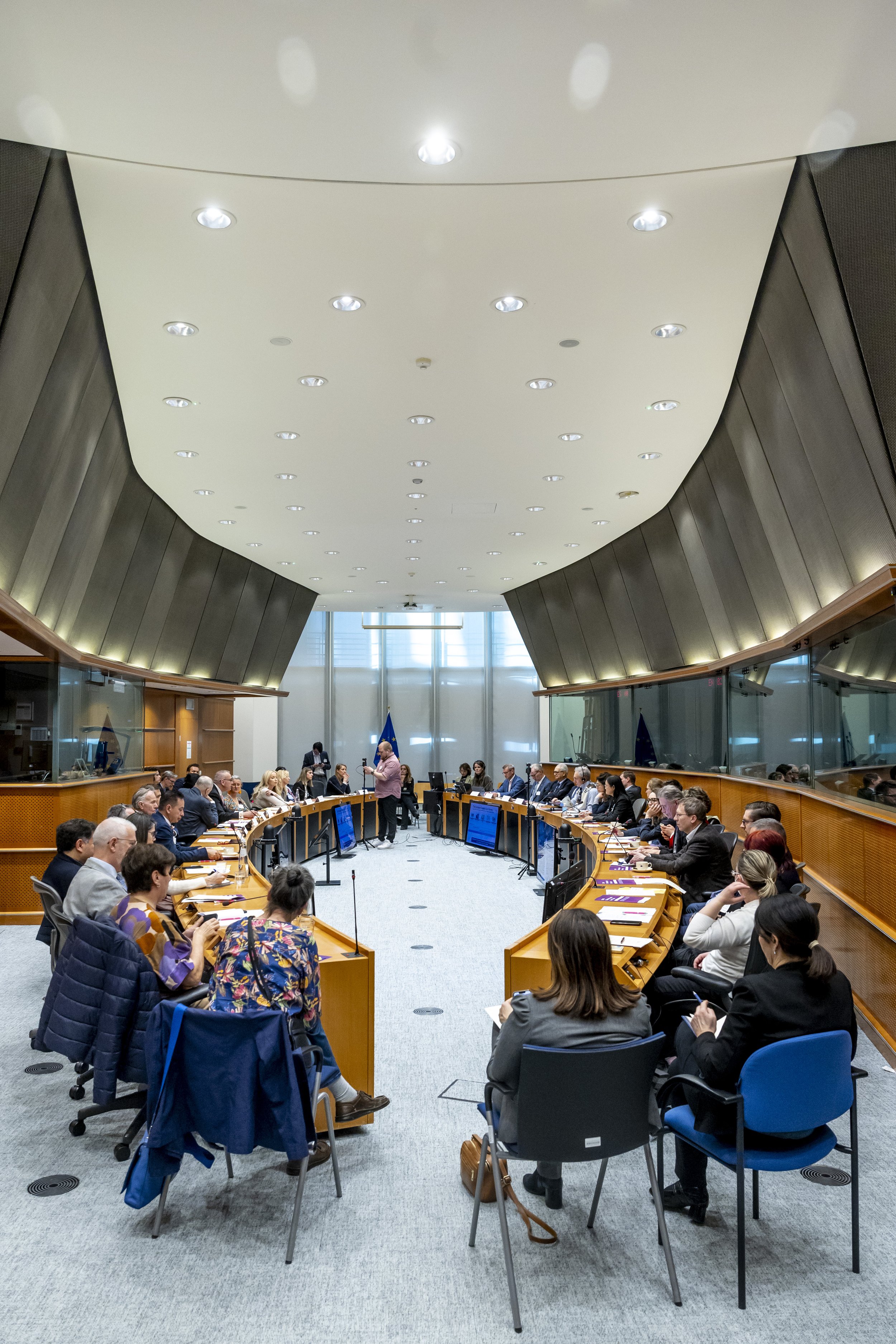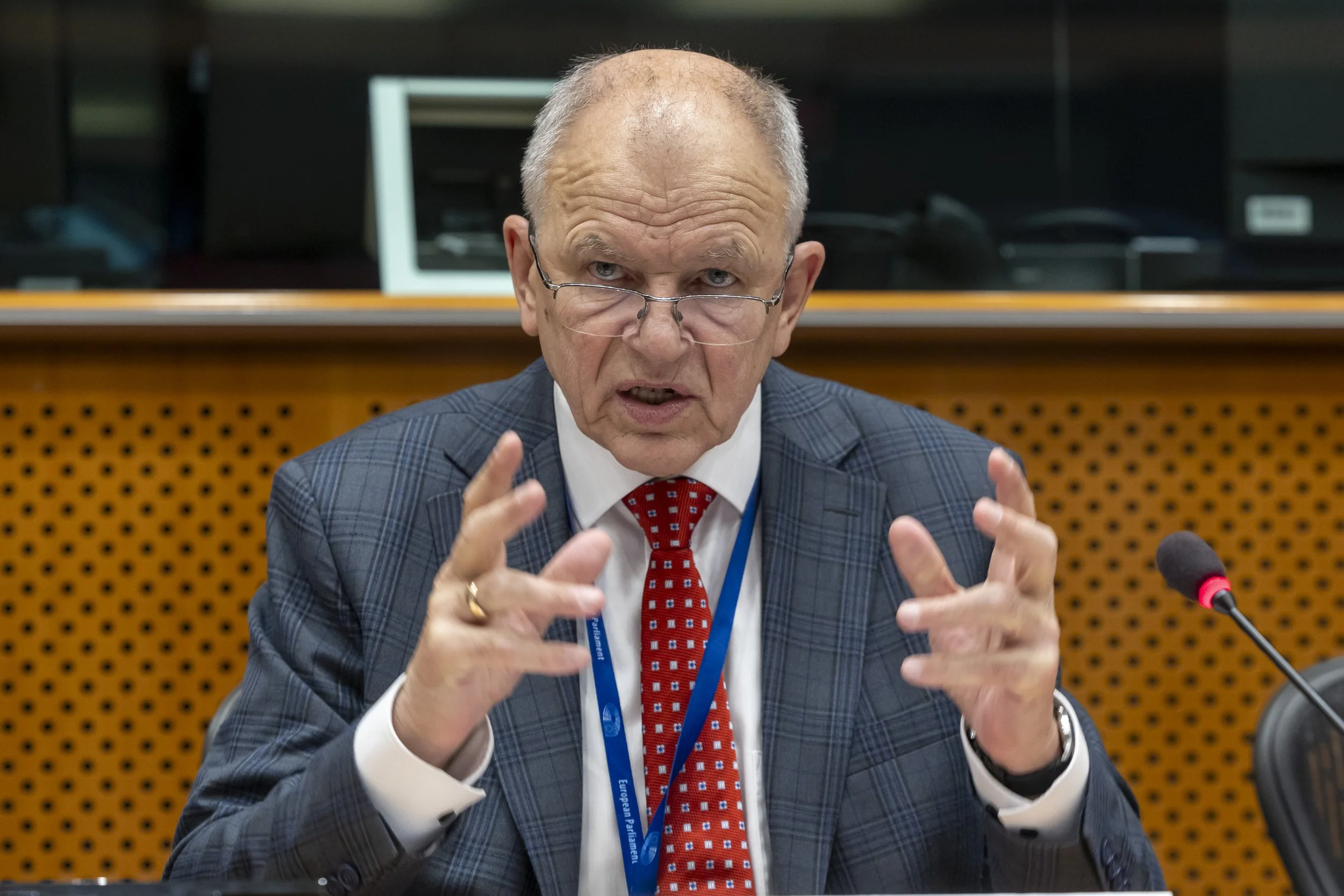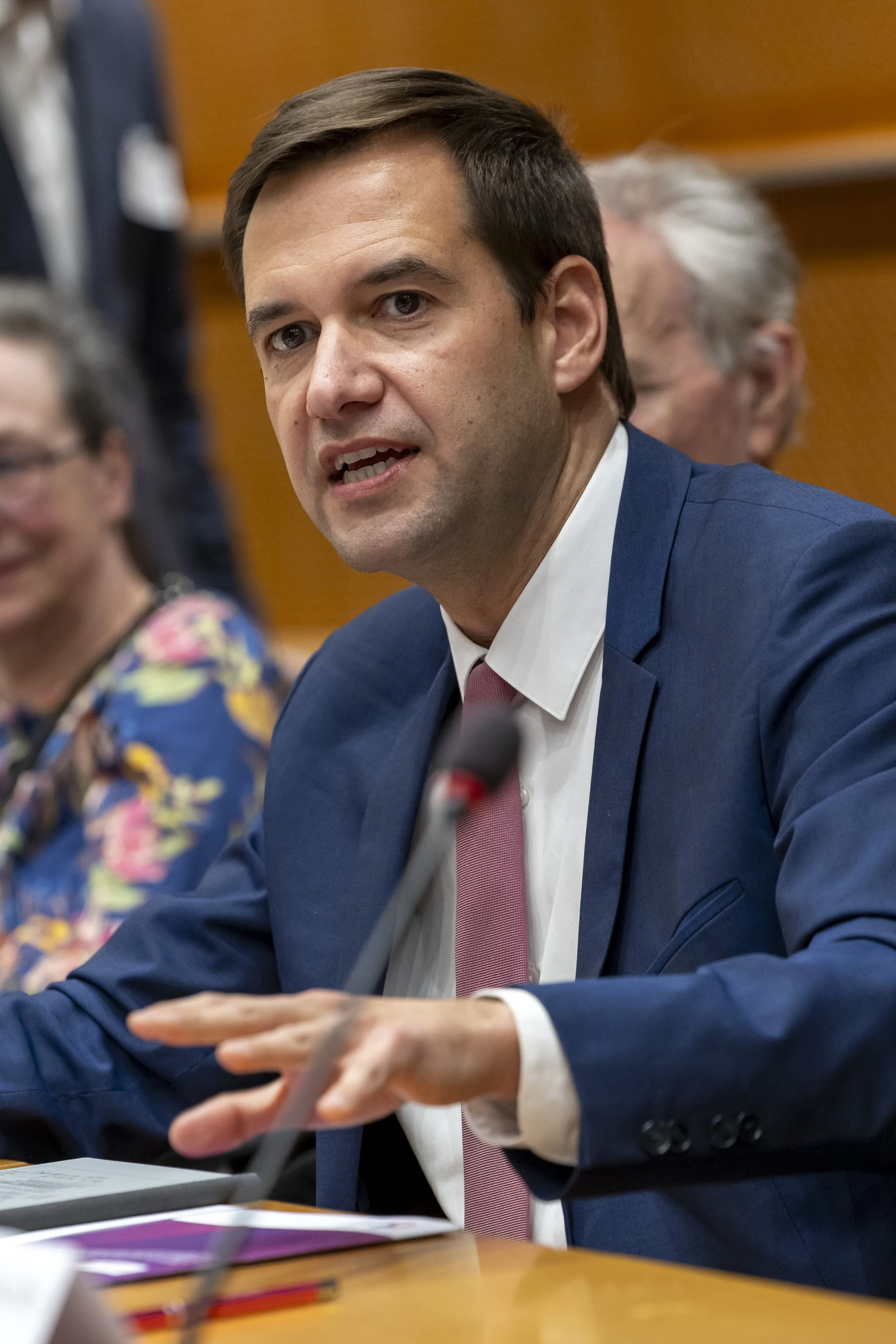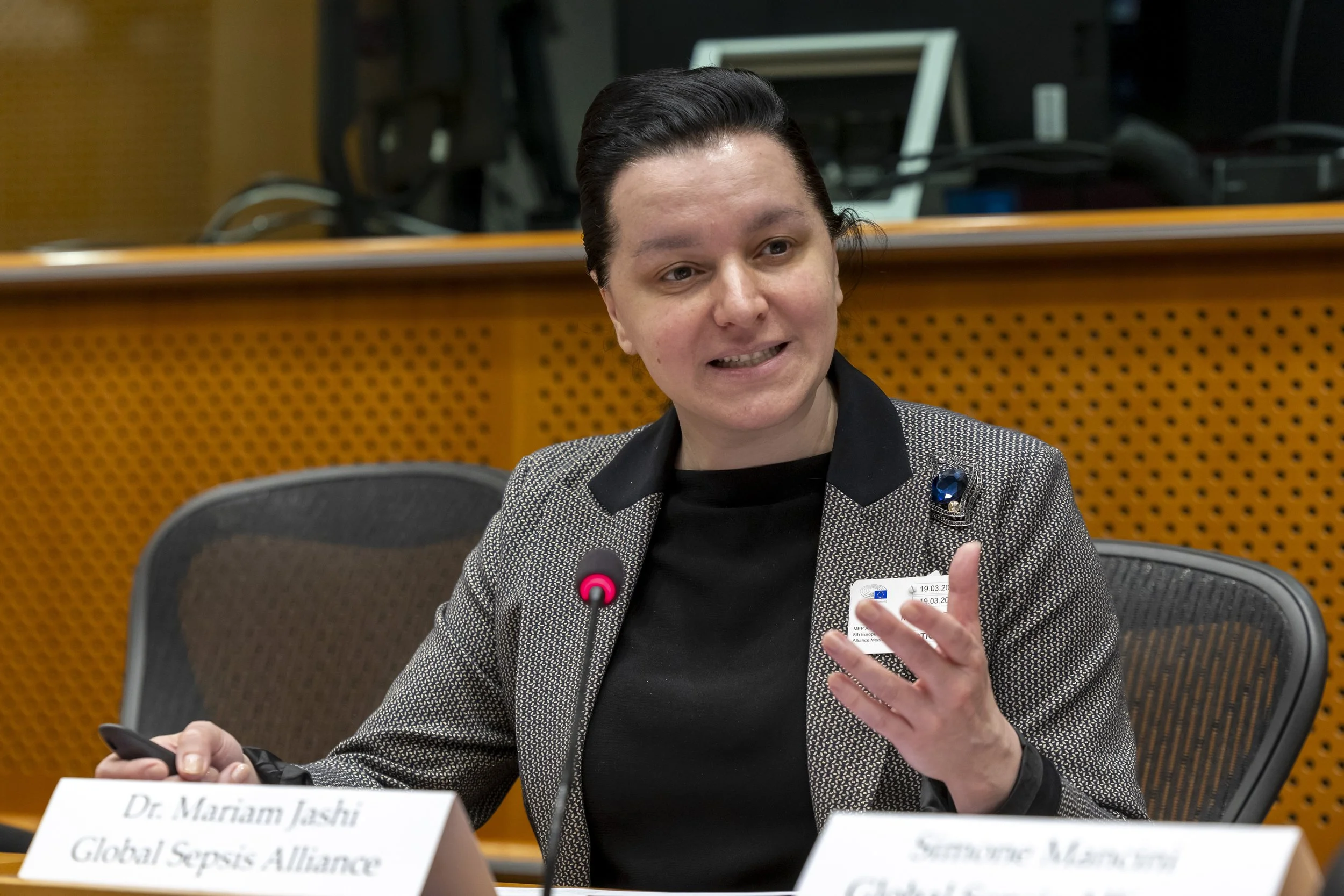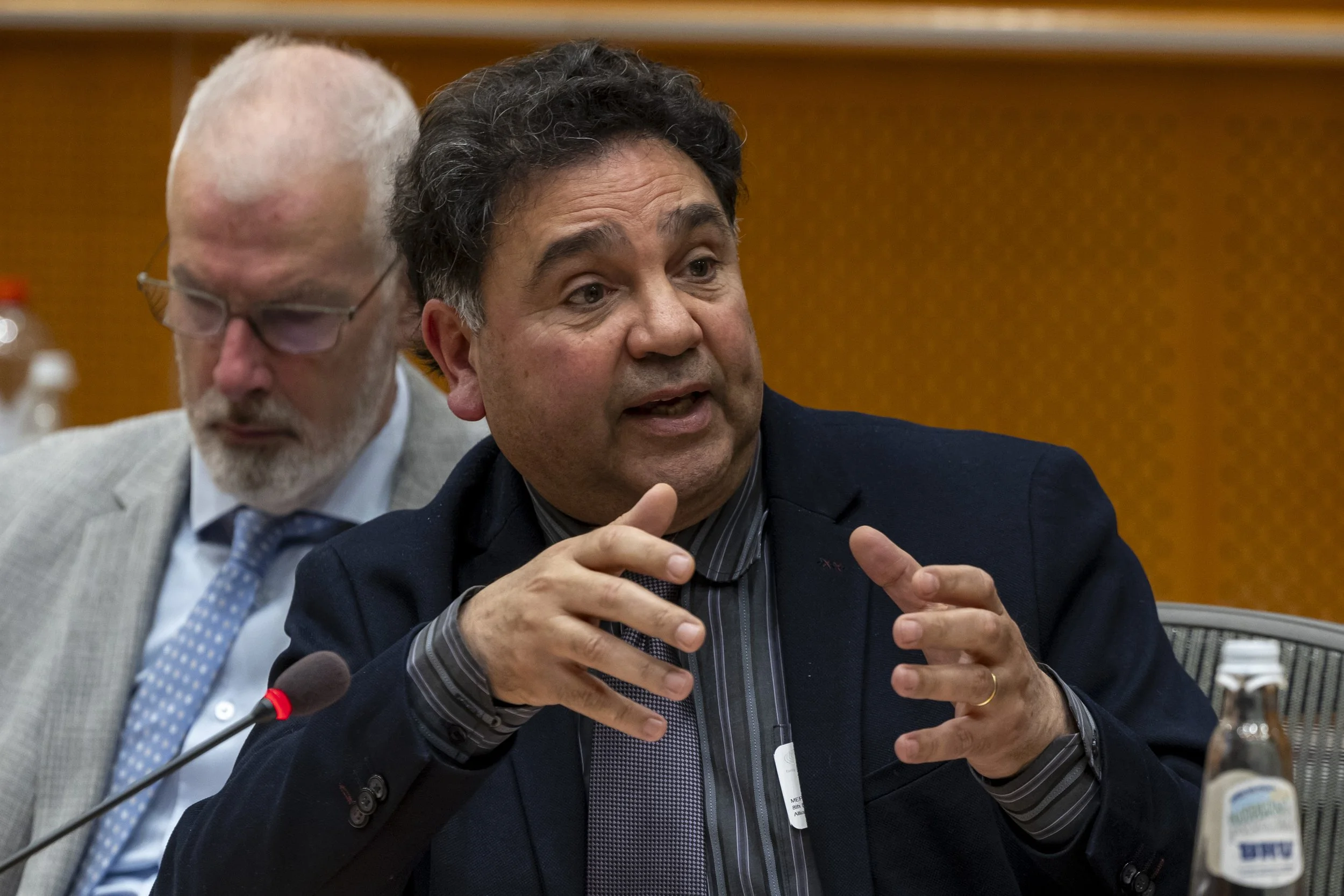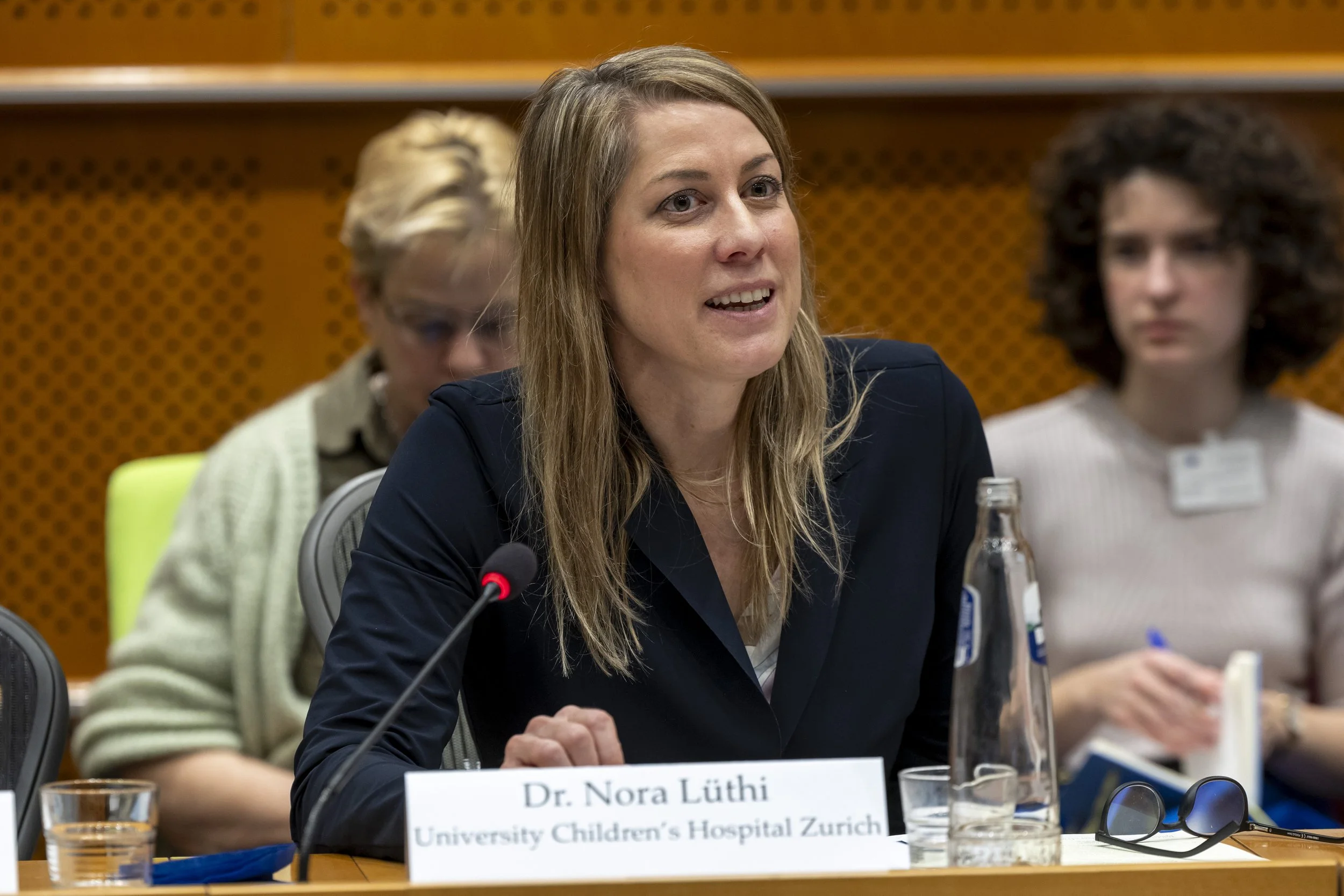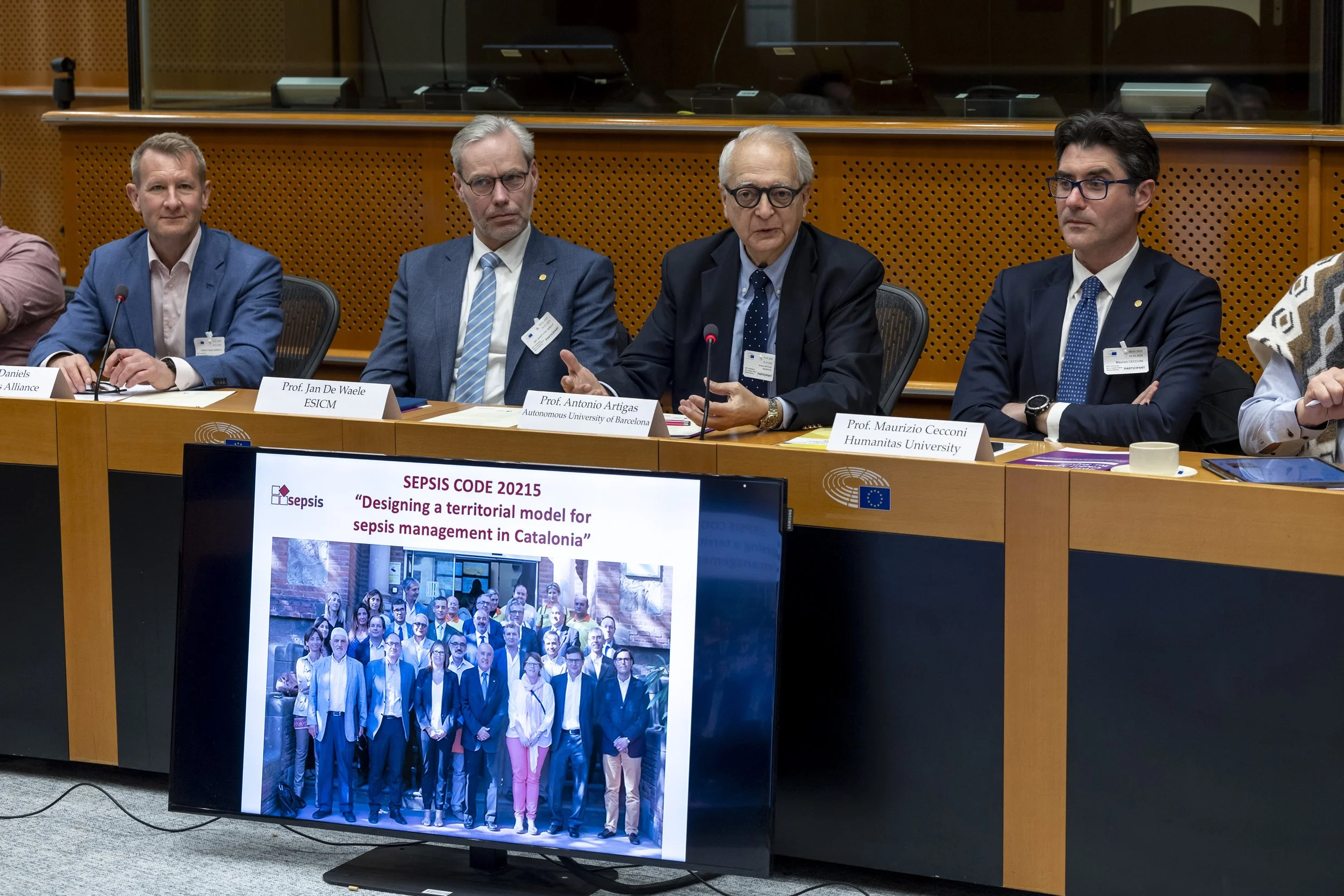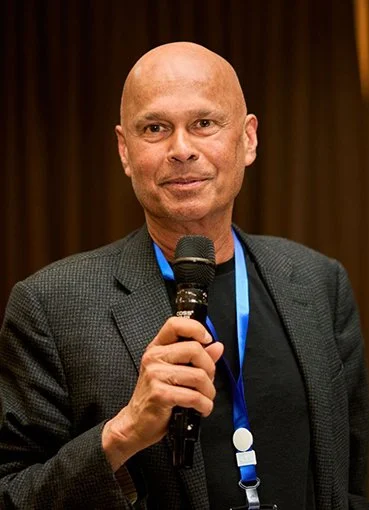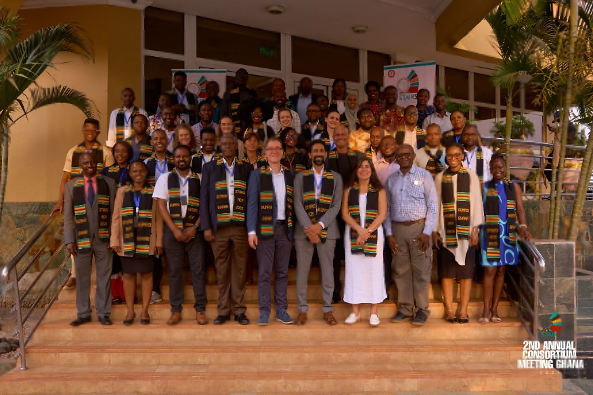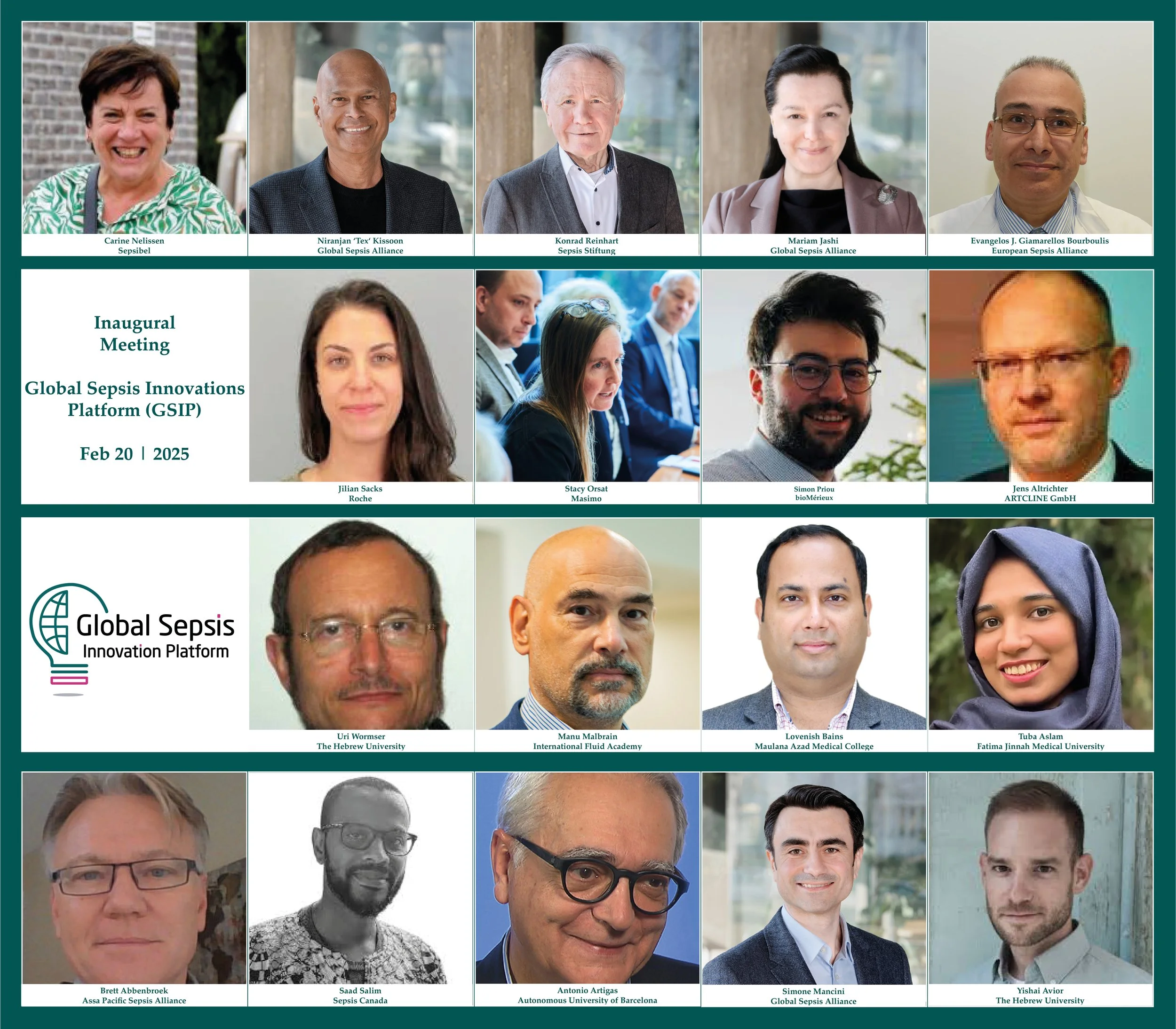Hon. Vytenis Andriukaitis
“By working together, we can save lives and prevent suffering caused by this devastating medical emergency”, said Vytenis Andriukaitis, MEP and ESA Patron, welcoming the Call to Action that the European Sepsis Alliance launched at its 8th Annual Meeting, hosted in the European Parliament on 19 March.
The event, taking place at the heart of European policymaking, marked a pivotal moment for sepsis advocacy in Europe. It provided a unique platform to unite healthcare professionals, policymakers, researchers, survivors, and advocacy leaders in their collective mission to improve sepsis care across the continent. As a starting point for enhanced advocacy efforts for sepsis in Europe, the meeting underscored the urgent need for coordinated action and reinforced the commitment to the 2030 Global Agenda for Sepsis.
Prof. Evangelos J. Giamarellos Bourboulis
Prof. Evangelos J. Giamarellos-Bourboulis, Chair of the European Sepsis Alliance, set the tone with a passionate keynote address. As he presented the recently published main outcomes of the European Sepsis Care Survey, he stressed the critical need for enhanced awareness and better management of sepsis within healthcare systems: “The majority of units [in Europe] do not have standardized screening; there is no standard operating procedure (SOP) for management of sepsis; 70% of the hospital have no training or quality improvement program; almost 90% of the labs have limited service just for blood cultures”.
Ricardo Baptista Leite
The call for improvement of sepsis standard of care in Europe was echoed by Prof. Konrad Reinhart, Founding President of the Global Sepsis Alliance, who urged stakeholders to move beyond fragmented efforts. “We need urgently to combine all these issues - sepsis, AMR, pandemic preparedness - in strategic holistic approaches”, he asserted, highlighting the need for integration of sepsis in health systems and for collaboration.
One of the most inspiring contributions came from Hon. Ricardo Baptista Leite, President of the UNITE Parliamentarians Network for Global Health, who called for legislative backing to sustain progress. Pointing to the importance of embedding sepsis into policy frameworks, he exhorted the European policymakers of this mandate to take responsibility and action: "We cannot let this mandate end without a European Sepsis Plan with clear actions clear resources, clear metrics that we can measure in terms of results".
Dr. Mariam Jashi
Dr. Mariam Jashi, CEO of the Global Sepsis Alliance, laid out the potential of the 2030 Global Agenda for Sepsis, advocating for Europe to take a leading role. “By setting clear targets and benchmarks, Europe can demonstrate global leadership in combating sepsis”, she explained, echoing Hon. Baptista Leite in challenging policymakers to seize the opportunity.
Shahrzad Kiavash (left) and Marianne Haverkamp
The panel discussion moderated by Dr. Ron Daniels, CEO of the UK Sepsis Trust, offered a diverse range of perspectives, highlighting both personal and professional insights, converging on the importance of awareness, education, and patient involvement in the fight against sepsis. Survivor and triathlete Shahrzad Kiavash shared her story of suffering and resilience, calling for public awareness: “Survivors like me are living proof that better care saves lives”. Adding an essential perspective, Marianne Haverkamp, Co-Chair of the ESA Patient and Family Support WG and of the GSA Global Sepsis Survivor and Families Committee, shared her personal journey of overcoming sepsis and how living with the aftermath of sepsis is a constant challenge, also for families.
Prof. Djillali Annane
Prof. Djillali Annane’s opinion is that “if we failed to solve the issue of sepsis for so many decades, it is because we did not listen to patients and their families and the most important thing to win that battle is to know better that enemy and to listen to those were exposed to it”.
Responding to the perspective of survivors, Prof. Maurizio Cecconi from Humanitas University and Past President of the European Society of Intensive Care Medicine (ESICM), stressed the importance of education at all levels, to improve early detection and treatment, echoed by Prof. Jan De Waele, current ESICM President, who reflected on the role of professional organizations in bringing awareness beyond the ICU, as sepsis happens mainly in the community and its effects affect people also after hospital discharge.
Dr. Nora Lüthi
The importance of awareness and education was also reiterated by Dr. Nora Lüthi, Medical Programme Manager for the Sepsis Plan in Switzerland: “It was very clear that we had to prioritize sepsis awareness, education of the public and of healthcare workers, that we should promote research, and post sepsis support for survivors and family members, and then issue and develop standardized protocols for early detection and treatment.”
Very much appreciated was the attendance by remote of two key stakeholders which should have a key role in the near future when it comes to sepsis treatment and preparedness. Marco Cavaleri confirmed the commitment of the European Medicines Agency (EMA) to accelerating access to innovative treatments and underscored the need for regulatory frameworks that support innovation. Meanwhile, Raquel Rodríguez Alonso from the Health Emergency Preparedness and Response Authority (HERA) of the European Commission, recognized the importance of sepsis as a critical concern, and presented the work of HERA in making sure that medical countermeasures are in place across European countries, also to prevent and treat infections.
Dr. Ron Daniels, Prof. Jan De Waele, Prof. Antonio Artigas, Prof. Maurizio Cecconi
Prof. Antonio Artigas, Professor of Intensive Care Medicine at the Autonomous University of Barcelona, while presenting the progress made in sepsis management in Catalunya, thanks to a regional action plan, he also elaborated on the clinical challenges associated with sepsis diagnosis and treatment. He noted that the complexity of sepsis requires a multifaceted approach, integrating early diagnosis, advanced treatment options, and continuous education for healthcare professionals.
The meeting concluded with a strong call for continued collaboration and political will. The European Sepsis Alliance, together with the stakeholders who joined the event, will continue engaging with policy makers, further sharing the Call to Action “ Stop Sepsis, the leading cause of preventable deaths and disability in Europe”, and advocating for a European and National Sepsis Plans, with awareness, education, early detection, research and patient support at their core.






